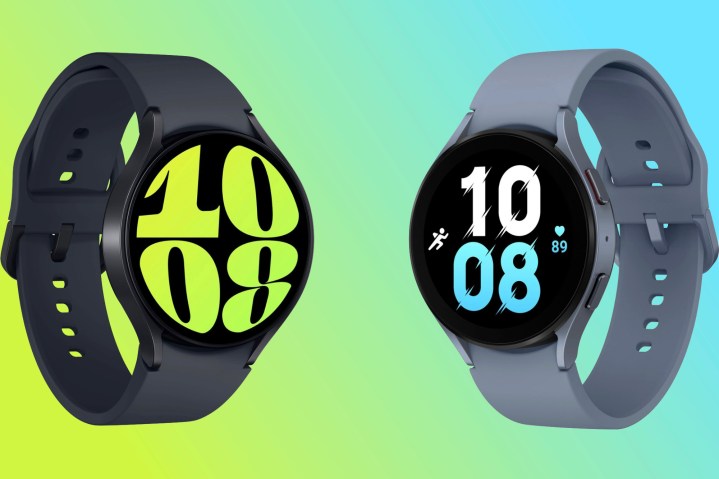
Samsung is once again trying its luck with a no-holds-barred Wear OS smartwatch to challenge the Apple Watch. The latest from the South Korean giant is the Samsung Galaxy Watch 6, which may not look like much of a stunner given its repetitive design, but the changes under its sleek chassis are quite meaningful.
While the Galaxy Watch 6 Classic’s trim and its rotating bezel are hogging the limelight, the vanilla Galaxy Watch 6 offers its own set of upgrades at a lower price. The display is bigger and more pixel-dense, the silicon inside is faster, there’s more memory to boot, and the battery capacity has also gone up.
All of these are practically convenient changes, and they are accompanied by some software-side health-centric tricks that will further elevate the smartwatch experience. But is it enough of an upgrade for you to get rid of your Samsung Galaxy Watch 5?
Here’s a detailed comparison between the Galaxy Watch 6 and Galaxy Watch 5 to help you decide if it’s time to upgrade.
Samsung Galaxy Watch 6 vs. Galaxy Watch 5: specs
| Samsung Galaxy Watch 6 | Samsung Galaxy Watch 5 | |
| Display | Sapphire Crystal Super AMOLED, Full Color Always On Display 44mm: 1.5-inch (37.3mm) 480 x 480 pixels 40mm: 1.3-inch (33.3mm) 432 x 432 pixels |
Sapphire Crystal Super AMOLED, Full Color Always On Display 44mm: 1.4-inch (34.6mm) 450 x 450 pixels 40mm: 1.2-inch (30.4mm) 396 x 396 pixels |
| Processor | Samsung Exynos W930 Dual-Core 1.4GHZ | Samsung Exynos W920 Dual-Core 1.18GHz |
| RAM | 2GB | 1.5GB |
| Storage | 16GB | 16GB |
| Battery | 44mm: 425mAh 40mm: 300mAh |
44mm: 410mAh 40mm: 284mAh |
| Dimensions and weight | 44mm: 42.8 x 44.4 x 9.0 mm, 33.3g -40mm: 38.8 x 40.4 x 9.0 mm, 28.7g |
44mm: 43.3 x 44.4 x 9.8 mm, 33.5g 40mm: 39.3 x 40.4 x 9.8 mm, 28.7g |
| Software | One UI 5 Watch | One UI 5 Watch |
| Sensors | Samsung BioActive Sensor (Optical Heart Rate + Electrical Heart Signal + Bioelectrical Impedance Analysis), Temperature Sensor, Accelerometer, Barometer, Gyro Sensor, Geomagnetic Sensor, Light Sensor |
Samsung BioActive Sensor (Optical Heart Rate + Electrical Heart Signal + Bioelectrical Impedance Analysis), Temperature Sensor, Accelerometer, Barometer, Gyro Sensor, Geomagnetic Sensor, Light Sensor |
| Connectivity | LTE, Bluetooth 5.3, Wi-Fi 2.4+5GHz, NFC, GPS / Glonass / Beidou / Galileo | LTE , Bluetooth 5.2, Wi-Fi 802.11 a/b/g/n 2.4+5GHz, NFC, GPS / Glonass / Beidou / Galileo |
| Material and colors | Armor Aluminum case with Sport Band 44mm: Graphite, Sliver 40mm: Graphite, Gold |
Armor Aluminum case with Sport Band 44mm: Graphite, Sapphire, Sliver 40mm: Graphite, Pink Gold, Silver |
| Durability | 5ATM + IP68 / MIL-STD-810H | 5ATM + IP68 / MIL-STD-810H |
| Price | Starts at $280 | Starts at $300 |
Samsung Galaxy Watch 6 vs. Galaxy Watch 5: design
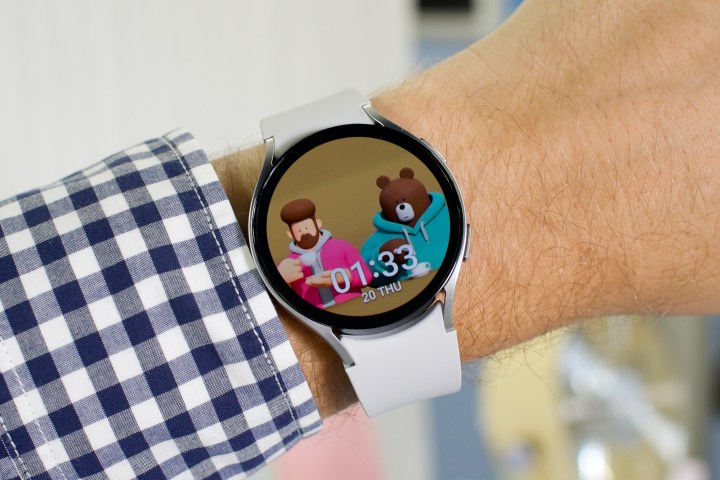
At first glance, the Galaxy Watch 5 and its successor look identical. The round metallic chassis with beautifully curved arms, the familiar sports band look, and the biosensing array all have been carried over from the previous generation to the next.
But there are a couple of differences here. First, the bezels are slimmer, which allowed Samsung to fit a slightly bigger display without having to adjust the chassis size. Second, there’s a new gold color option on the table for the Galaxy Watch 6.
However, the choices are more limited this time around. You can only pick between graphite, silver, and gold colors for the Galaxy Watch 6, and which ones you can get will depend on how flexible you are on size; silver is only available on the 40mm Watch 6 this year, while the new gold is exclusive to the smaller 40mm version. The Galaxy Watch 5 is available in graphite and silver finishes in both sizes, plus sapphire on the 44mm version and pink gold on the 40mm Watch 5.
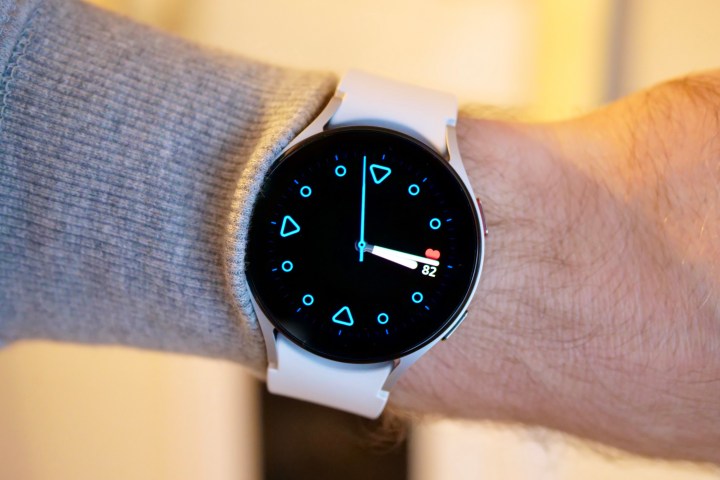
Samsung hasn’t added any secret sauce to the durability of the Galaxy Watch 6 as it retains the MIL-STD-810H ruggedness level of its predecessor. The build is once again IP68-certified with 5ATM water resistance, while the material of choice — armor aluminum for the case — has been used once again.
Samsung says its latest smartwatch can survive immersion up to 50 meters for a peak duration of 10 minutes underwater — or up to 30 minutes if the depth doesn’t exceed the 1.5-meter mark. On the customizability side of things, Samsung is introducing new bands, including a fresh fabric band style. Combined with the classic model, Samsung is touting over 700 watch case and band style combinations. Both watches also use standard 20mm band sizes.
The company has another trick up its sleeve this year with a new “one-click” design for its bands. This makes it nearly effortless to swap out your band with a different one when you want to change things up. The attachment system is part of the bands, rather than the watch, so the new one-click bands can still be used with older Galaxy Watch models (and older bands can be attached to the Galaxy Watch 6). The band included with the Galaxy Watch 6 naturally uses the new design, but you won’t need a Galaxy Watch 6 to take advantage of the new one-click mechanism.
Both watches have incredibly similar designs across the board, so we’re calling this one a tie.
Winner: Tie
Samsung Galaxy Watch 6 vs. Galaxy Watch 5: display
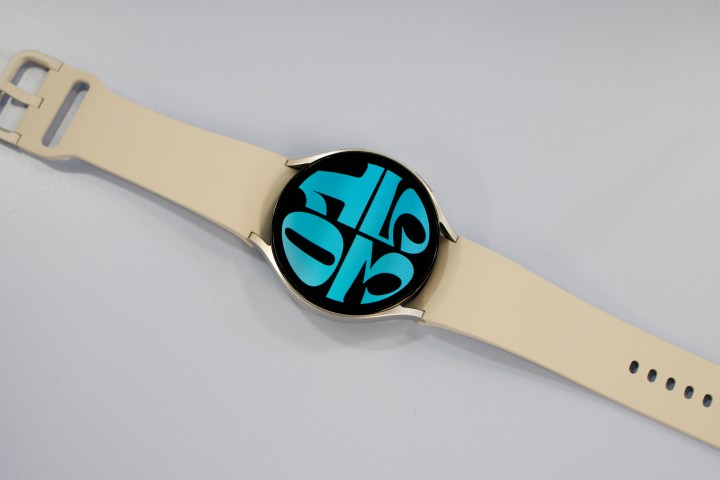
The Galaxy Watch 6, just like its predecessor, comes in two sizes: 40mm and 44mm. But thanks to slimmer bezels, the active display area has gone up by up to 20%. And with it, the screen resolution as well.
The 44mm trim of the Galaxy Watch 6 offers a 1.5-inch display with a higher 480 x 480-pixel resolution, while the Galaxy Watch 5 uses a smaller 1.4-inch AMOLED screen with a lower resolution of 450 x 450 pixels.
Moving to the 40mm version, you get a 1.3-inch (432 x 432-pixel) OLED display on the Galaxy Watch 6. On the other hand, the Galaxy Watch 5’s 40mm variant has a smaller 1.2-inch (396 x 396-pixel) screen. Samsung continues to use sapphire glass for protection across both generations.
But there’s one crucial upgrade. The brightness on Galaxy Watch 6 goes all the way up to 2,000 nits, double that of the Galaxy Watch 5. That makes it much easier to interact with on-screen content on the new smartwatch in broad daylight without having to worry about squinting to see it through shadows and reflections. It’s incredibly easy to see even in direct sunlight, so if you spend a lot of time outdoors, this alone could make the Watch 6 a worthy upgrade over last year’s model.
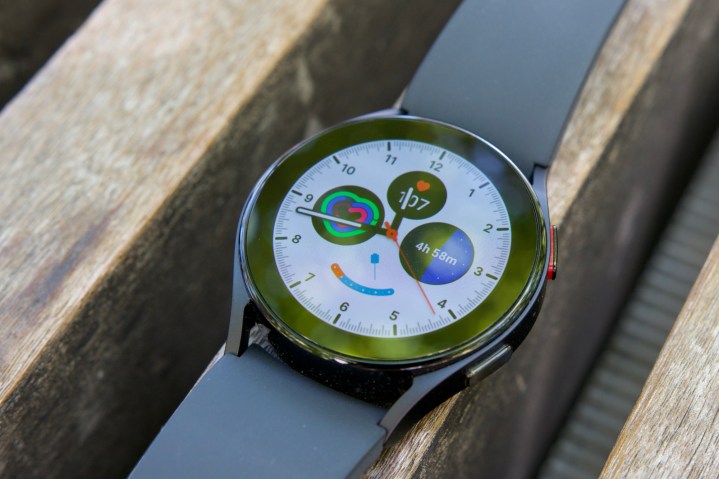
Samsung has also enhanced the watch gestures on the Galaxy Watch 6, allowing users to set shortcuts that let them access apps and important functions with ease. In order to make the most of the 30% slimmer bezels, there are also new gestures to highlight the perks of a bigger screen.
The Galaxy Watch 6 delivers meaningful upgrades — including a larger screen and noticeably improved brightness — so it gets the win for this round.
Winner: Samsung Galaxy Watch 6
Samsung Galaxy Watch 6 vs. Galaxy Watch 5: internal hardware
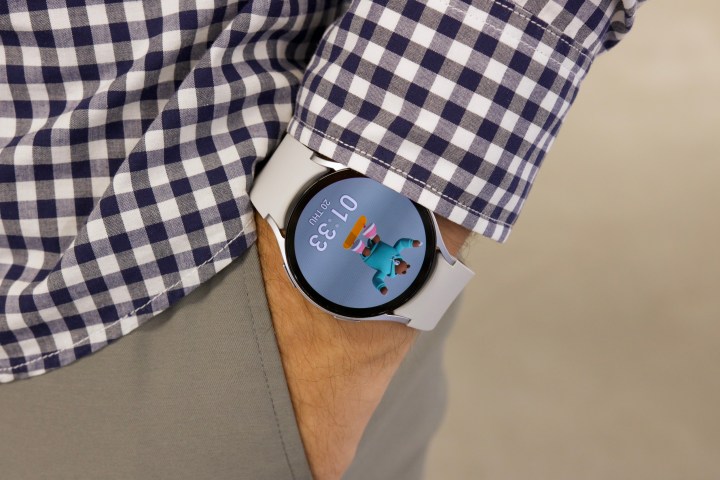
Samsung has not only equipped the Galaxy Watch 6 with a faster processor but has also enhanced the RAM capacity. The Galaxy Watch 6 draws power from the in-house Exynos W930 dual-core processor clocked at 1.4GHz. Its predecessor came equipped with the Exynos W920 chip ticking at 1.18 GHz. The standard RAM capacity on Samsung’s Galaxy Watch 6 is 2GB, while the Galaxy Watch 5 series is limited to 1.5GB of dynamic memory.
While that’s a modest upgrade on paper, apps open more quickly and notifications scroll smoothly for a natural and effortless user experience.
Samsung has also enhanced the Bluetooth connectivity aspect, adding Bluetooth v5.3 support to the Galaxy Watch 6, while the Galaxy Watch 5 is limited to the older v5.2 standard. The sensors, however, remain identical.
Across the Galaxy Watch 5 and its successor model, you get a temperature sensor, accelerometer, barometer, gyroscope, geomagnetic sensor, and light sensor. More advanced health sensing is deployed to the custom Samsung BioActive sensor, which can measure heart rate, electrical cardiac signals, and bioelectrical impedance.
Although the sensors haven’t changed, significant upgrades to the processor and RAM help the Galaxy Watch 6 win this round.
Winner: Samsung Galaxy Watch 6
Samsung Galaxy Watch 6 vs. Galaxy Watch 5: battery

One of the more meaningful upgrades on the Galaxy Watch 6 is a larger battery. Compared to the 284mAh (40mm model) and 410mAh (44mm trim) batteries on the Galaxy Watch 5, Samsung has fitted 300mAh (40mm version) and 425mAh (44mm variant) batteries inside the Galaxy Watch 6.
But despite the bump in battery size, Samsung’s official press material claims 40 hours of battery life, while enabling the always-on display mode brings those figures down to 30 hours. That’s not much of an improvement compared to the Galaxy Watch 5, and at first glance, it would appear that the faster processor and larger display are to blame here.
However, it looks like Samsung is living up to its claims this year, as our testing shows the Galaxy Watch 6 delivers significantly better battery life than its predecessor. In practical use, the Watch 5 fell well short of Samsung’s estimates, but the new Watch 6 manages to get through a very active day with 60% to 70% of battery life remaining — and that’s with the always-on display enabled. At the very upper limit, you may be able to squeeze in about 48 hours on a single charge, including two nights of sleep tracking, which is pretty impressive considering that the Watch 5 couldn’t get through even part of a second day without a top-up.
Sadly, no tangible improvements have been made to the charging speed, though. The Galaxy Watch 6 is still reliant on the same WPC-based wireless charging standard as the Galaxy Watch 5. That means you either need the supplied charging puck or a compatible charging mat to juice up the smartwatch’s battery. Even with a Samsung phone that supports wireless charging in your hands, you can’t use it to wirelessly top up the Galaxy Watch 6’s battery.
Despite a relatively small increase in battery capacity, Samsung has worked wonders with power efficiency this year, significantly improving the endurance of the Galaxy Watch 6 over its predecessor.
Winner: Samsung Galaxy Watch 6
Samsung Galaxy Watch 6 vs. Galaxy Watch 5: health sensing
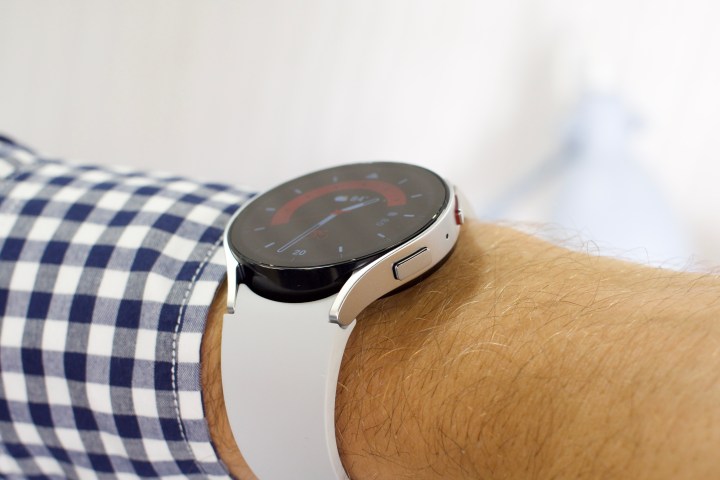
As mentioned above, no technical upgrade has been made to the sensing hardware. But that doesn’t mean the Galaxy Watch 6 is underwhelming by any stretch of the imagination. It supports sleep tracking, heart rate measurement, fall detection, temperature sensing, blood oxygen saturation analysis, stress level assessment, blood pressure monitoring, sweat loss measurement, ECG measurement, and more.
It can also detect irregular heart rhythms, which could be a sign of serious cardiac complications like AFib. And thanks to the Thermo Check feature, it can deploy its infrared sensing capabilities to measure the temperature of a water body that you are about to swim in, the temperature of your food, and more — without any physical contact.
Taking things a step further, Samsung has introduced a new Sleep Score Analysis system on the Galaxy Watch 6 that analyzes metrics like sleep and awake time, physical and mental recovery, and sleep cycle, among others.
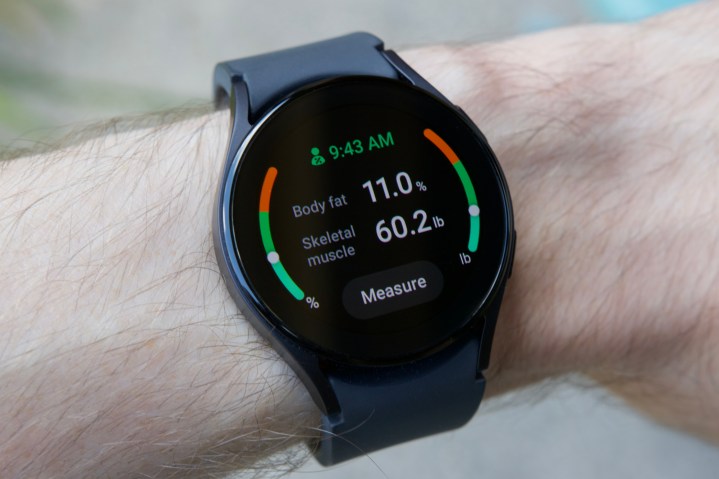
The updated Sleep Message system will offer users meaningful feedback about their sleep quality each morning. There’s also a sleep consistency feature that lets users keep an eye on how consistent their sleep and wake slots are.
Samsung has also enhanced the Sleep Coaching feature, which offers tailored step-by-step guidance to users on how to improve their sleep habits. Once enabled, it takes a wide range of steps like enabling sleep mode on the watch, as well as the connected phone, changing the settings of smart home devices, dimming the screen, and more.
On the fitness side of things, there’s a new Personalized Heart Rate Zone feature that lets users define workout intensity levels across five tiers based on their physical ability. For running enthusiasts, the freshly introduced Track Run system will maintain a comprehensive log of their running history.
This all sounds great, but there’s also the argument that the Galaxy Watch 5 will soon see most (if not all) of these changes down the road in a future software update. The Watch 6 may have more functionality out of the box, but the Watch 5 won’t be behind it for long.
We’re chalking this round up as a tie.
Winner: Tie
Samsung Galaxy Watch 6 vs Galaxy Watch 5: price and availability
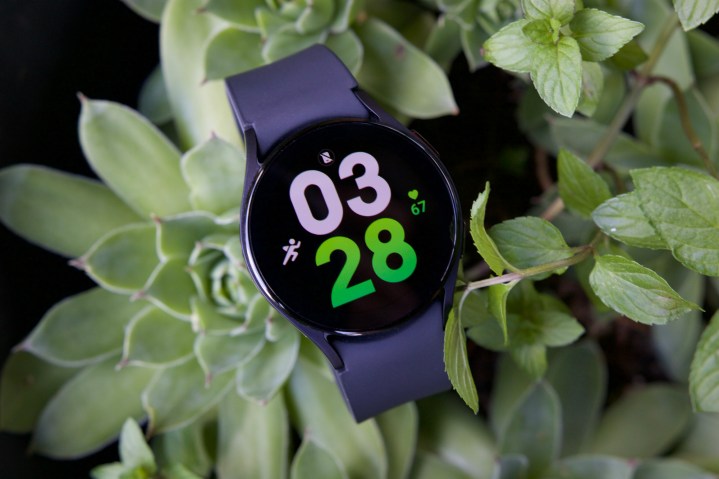
The Samsung Galaxy Watch 5 started at $280 for the 40mm variant without cellular connectivity, while the LTE version has a base price of $330.
For the Galaxy Watch 6, Samsung is asking at least $300 for its Bluetooth-only version, while the LTE-ready variant will cost you a minimum of $350.
Overall winner: Samsung Galaxy Watch 6
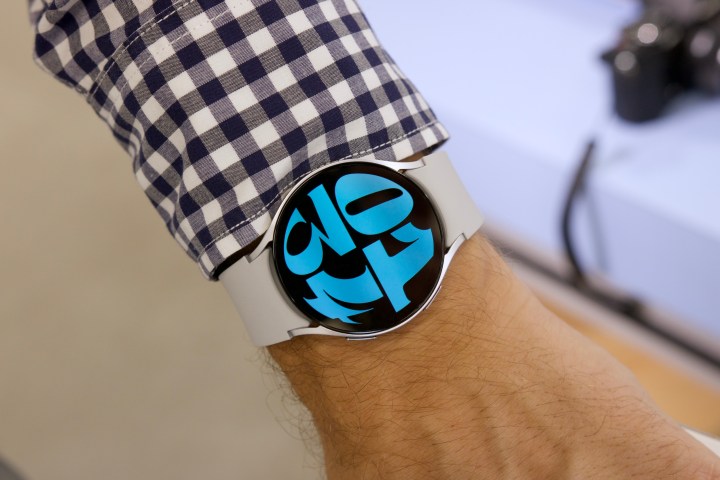
The Galaxy Watch 6 may not look like much of a material upgrade over the Galaxy Watch 5, especially owing to the near-identical looks, but there are plenty of changes under the hood that make it a legitimately better product.
The screen is noticeably brighter and can now accommodate more content owing to the slimmer bezels. The processor is faster, and thanks to added RAM capacity, the multitasking experience should also be smoother.
The larger battery, coupled with Samsung’s promise of lower battery consumption, is definitely a step in the right direction for any smartwatch out there, and it makes a surprisingly big difference in practical terms. Samsung has also enhanced sleep- and fitness-related capabilities by adding some new tricks, which is also a welcome change.
But what if you already have the Galaxy Watch 5? You could likely go either way. The core experience of the Galaxy Watch 6 is the same — it’s just faster, with a much more usable display and noticeably better battery life. If you have cash to spare and need a performance and display boost, the Watch 6 will deliver. But if you’re fine with your Watch 5 and don’t feel a big need to upgrade, you’re also OK waiting until the Galaxy Watch 7 next year.
Editors’ Recommendations
Credit: Source link


Comments are closed.